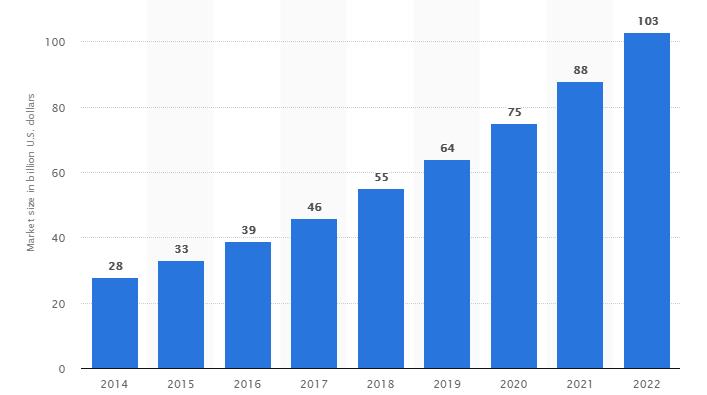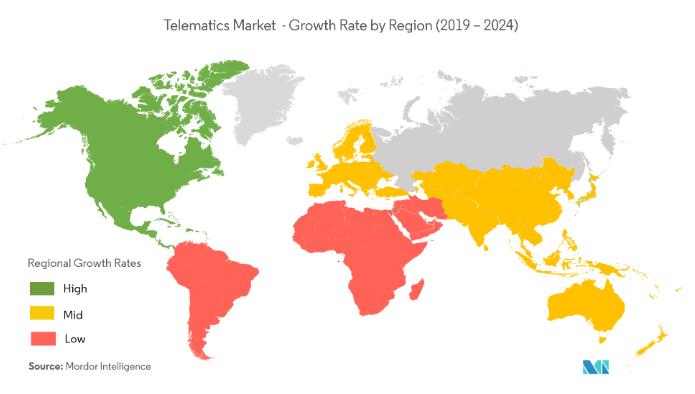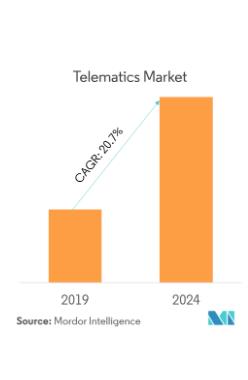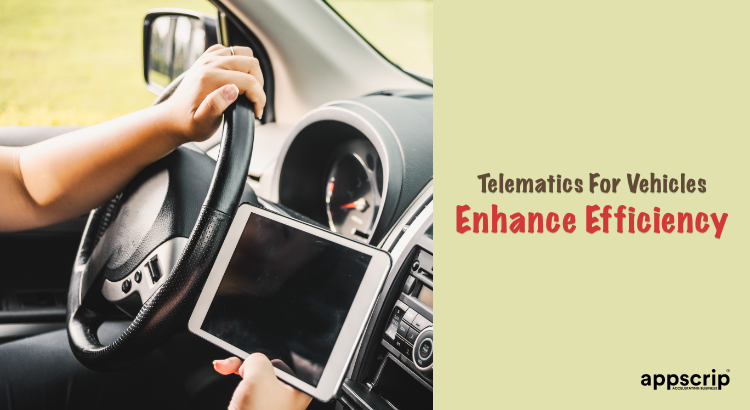Telematics is the blend of two sciences – telecommunications (Telecommunication is the exchange of information between entities utilizing technology) and informatics (branch of science that deals with the processing of data for storage and retrieval). The combination of these two with the best-adopted features has immense potential for a plethora of industries.
The term in fact is now more commonly used in reference to telematics for vehicles. Wireless telematics devices and other adopted technologies collect and transmit data to infer upon vehicle use, maintenance necessities and periodic servicing schedules.
Telematics solutions can also be perceived as extended GPS tracking resolutions. This empowers fleet managers to keep tab on vehicles, calculate fuel consumption, monitor driver behavior and organize vehicle maintenance. Wireless (telematics) devices in conjunction with other adopted technologies (hardware) collect and transmit data from an asset/vehicle back to a platform where this information (software) can be retrieved.

Telematics for vehicles
Your car will now proffer information to insurance companies and help decide on its premium. It’ll keep tabs on any dangerous maneuvers executed by you over a period of time and furnish authorities with mandatory information in case of an accident.
Telematics is a technique of tracking a vehicle. Through a combination of GPS systems and onboard diagnostics, we can record or map where exactly a vehicle is and how fast it is traveling. This can be cross-referenced with how it is behaving internally.
Formula One teams have been reaping the benefits of telematics for years. By installing sensors in F-1 cars and with the assistance of a trackside wireless network, teams have been tracking opponent vehicles and gathering important data to win races.
Telematics can be used to transfer both data and communications between a vehicle and a central management system employing a 3G network.
Usage of Telematics
Vehicle telematics is utilized to monitor fleets of courier companies, track vehicles that are stolen, and guide emergency service vehicles. These can be integrated into cars such that if a car breaks down, emergency service or roadside assistance crews are intimated and help can be on its way. In case of an accident, necessary authorities can be informed and insurance companies can also be kept in the loop.

As Insurance firms imbibe telematics, the focus varies from pay as you drive (PAYD) to pay how you drive (PHYD). Driving behavior is monitored to assess risk via onboard technology to provide a precise rate and definite understanding of peril. Telematics also means that well-behaved drivers can be rewarded with lower fees.
Telematics and insurance premiums
The pricing model used by insurance firms as of now will become obsolete and newer models are founded on rates based on driving style and location rather than lifestyle and residential information. That is, it will be fairer.
It would be reduced insurance claims for drivers who take lesser risks and feedback would be provided on a driver’s performance. Hence fewer crashes and incidents and therefore fewer insurance claims. Feedback can be provided to enhance fuel economy too.
Also Read: Taxi App with niche features
Comparison of driver behavior
Insurance firms compare data collected using telematics with professional drivers. MyDrive an insurance telematics specialist, compares driver data to a fleet of Royal Society for the Prevention of Accidents (RoSPA)-qualified advanced drivers. This provides a robust, credible, and objective benchmark, and the closer you are to the ideal, the lower is your premium.

Feedback for drivers
Telematics for vehicles initially began by tracking the location of lorries/trailers and transferring that information to their base. Telematics is progressively cloud-based, sharing data, insight about driver habits, and risks are taken. The information shared could be a LED warning lamp for a high-risk maneuver performed. GreenRoad is a cloud-based service used by several firms with fleets of vehicles for telematics information sharing.
A detailed analysis could provide necessary information to a fleet manager such as the physical location of vehicles on their routes, drivers who consistently break speed limits, or a dangerous stretch known for accidents.
Telematics hardware
Telematics will work via smartphone apps. Mercedes has introduced embrace with interesting features. An app called Autoline is available in North Ireland by MyDrive for drivers to monitor driving habits.
The app is activated when the smartphone is plugged into a power source and begins to record data after the driver reaches 10mph.
The app records an individual’s driving habits such as levels of fluency, aggression, anticipation, and consistency. The benchmarking depends on road types such as motorway, highway, inner-streets – and diverse driving conditions – snow, heavy rain, congestions, etc.
Also Read: Blockchain Logistics

Telematics: Today
Hundreds and thousands of vehicles can be tracked and optimally utilized using fleet management software – a division of telematics. A central dashboard will provide information on fuel consumption, range of travel, temperature, location, etc.
The management/fleet managers can get an overview of the entire fleet, check the overall status of vehicles, profitability, location, and productivity of the entire fleet.
Firms use technology to optimize their fleet operations and boost their bottom lines while paving the future for their own digital transformations.
Safety tracking
Telematics for vehicles provides digital mapping of a vehicle’s operation, assisting fleet managers to fathom where improvements can be inculcated to achieve accident deterrent measures and driver safety regulations.
Managers can monitor vehicle speed and location and in integration with video check reasons for harsh driving.
Insurance assessment
Driver habits can be monitored by Insurance firms using telematics enabling them to more precisely determine risk factors and insurance premiums can be adjusted consequently.
Geofence can be incorporated to ensure vehicles operate within a designated area and offering off-road farm vehicle discounts.
Vehicle tracking
Using a combination of GPS satellites, receivers, networks, and cloud technologies vehicles can be tracked. The location can be downloaded and information loaded to cloud computing to be utilized by the driver for navigation and office staff for full load dispatching.
Trailer tracking
Articulated trailers have GPS trackers to keep them visible for pick-up drivers. Drivers could tag location while unhitching a trailer and information passed to the office to enable it to be located easily. Telematics also could ensure if there is unauthorized movement of the trailer and alerts could be sent to authorities.
Maintenance Schedules
Telematics for vehicles could help enhance vehicle maintenance and asset lifecycle management by tracking usage, schedule maintenance, warranty information and recovery, engine parameters tracking, and service tracking.
Expenses could be tracked, controlled, optimized and vehicles could be maintained in perfect working condition by keeping tabs on vehicle diagnostics such as battery voltage, engine oil pressure, coolant temperature, powertrain malfunctions, intake/exhaust valve concerns, oxygen sensor issues and others.

Telematics for Vehicles: The future
As mobile devices invade every sphere, fleet telematics will grow exponentially as apps will be developed to utilize the soaring number of GPS units produced and enhanced processing power via technology. Firms recognize the necessity to monitor their fleet to control costs and ensure compliance to government regulations.
Fleet owners are constantly looking for means to cut costs, enhance productivity and augment accountability, telematics will be the catalyst to provide the necessary tools. Firms will look at higher integrations such as mobile workforce administration, ERP software, and corporate management software.
While vehicle manufacturers can benefit by installing/integrating telematics systems to develop smart automobiles and deliver advanced features to consumers. They could exploit the flourishing Internet of Things (IoT) environment and connect vehicles to intelligent traffic technology and to cities.
Hindrances to telematics
Even though the technology is progressing rapidly, progress is being hampered due to proprietary systems. Nor can these systems cannot integrate with each other. Once smartphones and tablets dominate intercommunication then scalable platforms would be the manner to interact with telematics. Burgeoning software should bring the prices down.
Future of Telematics for vehicles
Successful implementation of telematics relies on identifying a solution, personalizing it with API integrations that work together to enable ideal blending for the unique needs and goals of a business. A model platform assists fleet managers to track relevant telematics data to help increase efficacy and reduce costs by restructuring processes and mobilizing businesses with information.
Profit margins are getting thinner across industries, compliance mandates are further taxing bottom-lines while safety concerns continue to gain momentum, hence choosing the right technology is crucial.
Cloud computing and smartphone apps are the future of telematics.
After an Engineering degree and a Diploma in Management I devoted 16+ years working in the automotive industry. My innate skill and extreme passion in writing, encouraged me to adopt it up as a profession. I have been writing for more than 10+ years in the software industry. The 400+ blogs I published are informative, exhaustive and interesting to a professional and causal reader.








